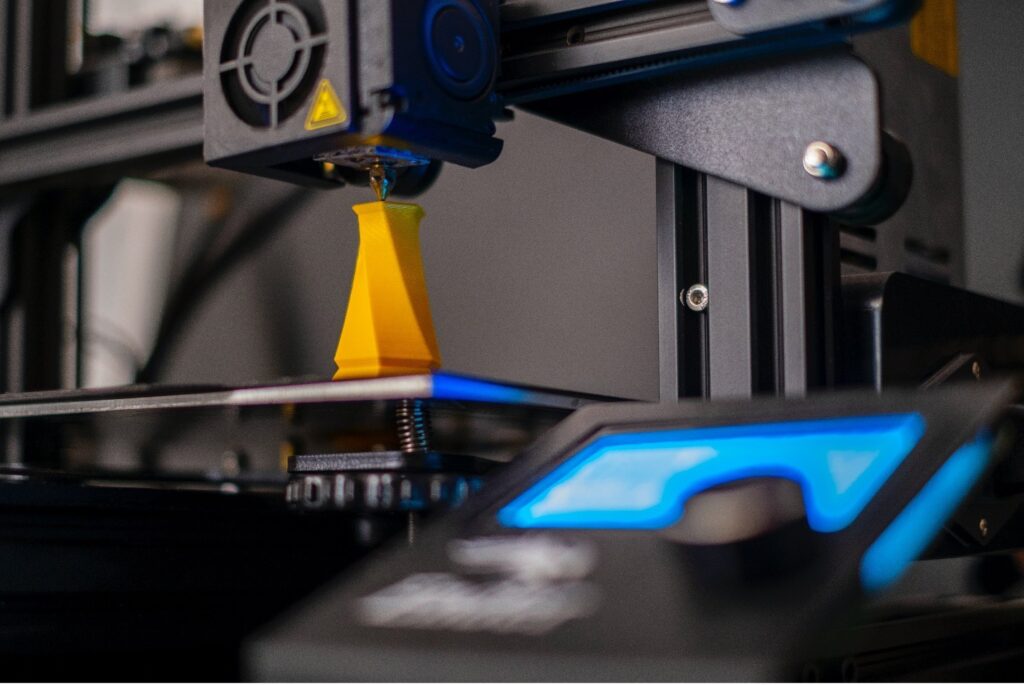Learn how digital fabrication in 2023 is helping reshape the future of manufacturing. Discover what it means for different industries and gain insights to help you predict emerging trends and satisfy evolving demands.
Digital fabrication in 2023 is nothing like it was just a decade ago. Technological advancements allow innovative manufacturers to iterate multiple designs without excessive waste or expense. However, integrating technology with traditional fabrication has numerous pros and cons.
This article will look at digital fabrication in 2023 and beyond to determine what manufacturers can expect. We will also discuss the practical applications and potential drawbacks of using additive manufacturing, rapid prototyping, and other emerging tech for product development. Let’s get started.
Table of Contents
Digital Fabrication Concepts and Technologies
Increased Efficiency and Productivity
Digital Fabrication in 2023 and Job Displacement Concerns
Digital Fabrication Applications
Healthcare and Biomedical Fields
What Is Digital Fabrication?
Digital fabrication, or digi-fab, means using computer-controlled machinery to create cardinal models of different products. It can also involve making physical items with advanced manufacturing techniques such as rapid prototyping, 3D printing, and CNC machining.

We offer fast, high-quality, tailored PROTOTYPING solutions for leading companies in a wide range of industries.
superior Rapid PROTOTYPING
Engineers convert digital information with computer-aided design (CAD) files and sophisticated software. Methods can include additive or subtractive manufacturing. The idea is to develop virtual objects and turn them into tangible things.
“Digital fabrication in 2023 means high precision outcomes despite design complexities.”
Technologies force machines to follow specific instructions on shaping, cutting, or building objects one detail at a time. Teams can quickly send concept mockups for interpretation, functional testing, and manufacturing. This benefit removes human error and provides a cost-effective solution for growing companies.
The latest manufacturing trends provide tools for on-demand production and customization. It is also suitable for creating small-scale, one-off products with minimal material waste. These advantages mark the beginning of an automated process that could revolutionize the industry and make innovation more accessible to small businesses and entrepreneurs.
Digital Fabrication Concepts and Technologies
This section will focus on the concept of digital fabrication in 2023 and examine its underlying technologies. It will also provide an overview of the primary components and expertise required for excellent outcomes.
Digital fabrication often combines technologies to turn concepts into profitable realities. Computer-controlled machines can define shapes, determine appropriate dimensions, and specify other elements during early phases. This information helps teams develop a comprehensive approach when visualizing or modifying pre-production designs.
The standard techniques for digital fabrication in 2023 can include the following:
- Additive Manufacturing (3D printing) – Build objects layer by layer using various materials.
- Computer-Numerical Control (CNC) – Subtract materials from surfaces to create shapes.
- Laser Cutting – Engrave materials using focused laser beam technology.
- Robotics – Eliminate fabrication risks and manage quality control.
- Automation – Use automated systems to create products quickly and efficiently.
Digital fabrication in 2023 uses advanced sensors and programming to execute complex operations quickly and accurately. These emerging technologies help enhance the process and improve outcomes without wasting time, talent, or materials.
Notable Developments
Rapid prototyping and 3D printing allow teams to streamline projects for minimal cost. They offer more speed, precision, and scalability for innovation. However, those are not the only notable developments for digital fabrication in 2023. Here are five trends to watch:
- Enhanced 3D Printing Capabilities
- Digital Twins
- IoT Integration
- Hybrid Fabrication Techniques
- Simulation Software Tools
Three-dimensional printing techniques have become faster and more accurate, allowing teams to manage massive projects and create complex objects with excellent fidelity. Meanwhile, engineers can develop digital twins (virtual replicas) to evaluate processes, simulate manufacturing workflows, and optimize efficiency.
IoT enables real-time monitoring, optimization, and predictive maintenance. And simulation software tools let designers create functional objects to examine behaviors, integrate innovative elements, and reduce errors during multiple iterations.
“A hybrid approach to digital fabrication in 2023 means combining different technologies to improve user interfaces.”
This approach also benefits educational institutions and entrepreneurial workshops by empowering creativity without forcing businesses to develop physical objects with costly resources. Let’s look at more advantages in the next section.
Pros of Digital Fabrication
Digital fabrication offers multiple advantages over traditional manufacturing processes. Check out these primary pros before we discuss the potential cons:
Increased Efficiency and Productivity
Rapid prototyping, 3D printing, and other digital fabrication technologies enable decentralization and promote distributed manufacturing. Local facilities can manufacture parts and products using accessible design files, reducing lead times, decreasing transportation costs, and lowering the carbon footprint.
Digital fabrication in 2023 has evolved to include several suitable materials and innovative applications. Designers can create elegant parts with specific mechanical, thermal, or chemical properties for adherence to mass distribution and ISO standards. The user-friendly tools lower the barrier to entry, fostering creativity and supporting meaningful entrepreneurship.
Enhanced Customization
Teams can enjoy greater design flexibility and personalization options with cutting-edge fabrication technologies. Rapid prototyping and 3D printing help create complex geometries that are impossible to achieve with traditional approaches. This advantage facilitates the production of custom objects tailored to specific requirements or industry standards.
An example of enhanced customization with digital fabrication is the medical industry’s reliance on personalized healthcare products. Many merchants and professionals require unique consumer goods and tailored industrial components for life-saving procedures.
Waste Reduction
Digital fabrication in 2023 focuses on sustainable manufacturing methods to lessen the environmental impact of innovation. Digifab strategies can help eliminate unnecessary use of non-renewable resources and reduce excess or discarded materials. Teams then use the decreased waste to cut manufacturing costs without compromising quality.
Take Adidas, for example. The leading sportswear brand uses 3D printing to create fully recyclable running shoes from a single reusable textile. Their advanced factories can then repurpose each shoe for other sustainable products in their inventory.
Cost-Effective Scalability
Companies offering customized products with quick turnaround times can charge ahead of the competition. However, traditional manufacturing methods don’t offer this advantage. Conventional methods require more time and money for fewer end-use parts. Rapid prototyping helps startups and established businesses develop exclusive products faster and cheaper.
Teams of designers, engineers, and machine operators can efficiently refine their products for quick design validation. A tech-centered approach reduces lead times and slashes expenses associated with traditional methods. And businesses with scalable, on-demand concepts can easily lead industries clinging to outdated practices.
Cons of Digital Fabrication
Digital fabrication in 2023 offers design complexity at little to no extra cost. It provides techniques and technologies for developing comprehensive inventories without additional tooling or labor. However, it also involves drawbacks that modern manufacturers need to know. Let’s zoom in.
Initial Investment
“Many digital fabrication tools require a significant upfront investment.”
The cost of using advanced manufacturing technology can be more than traditional methods. Unique materials, express production requirements, and evolving expectations may play a role.
Equipment costs and expertise are also factors. Digi-fab software, robotics, and machines can create a barrier for budgeted projects, small businesses, and educational institutions. Meanwhile, the equipment requires highly trained operators that could charge exorbitant fees for 3D printing and rapid prototyping services.
Learning Curve
The cost of training digital fabrication experts is high. Engineers must undergo several years of education and gain on-the-job experience to achieve productivity goals. They must also learn about intellectual property laws and help teams confidently iterate designs without piracy concerns.
The unauthorized distribution of project files can be problematic. These ethical issues can cause steep learning curves, costing manufacturers more time and money. Speak to an RP specialist and get an estimate to help determine the best approach.
Limited Material Options
Digital fabrication in 2023 involves high-quality materials and sustainable textiles. However, sustainability incurs significant limitations regarding usable materials. Some projects require specific properties like high-temperature resistance and electrical conductivity. Yet, those properties might not be available for 3D printing, rapid prototyping, or other advanced manufacturing processes.
Limitations can restrict the potential applications of digital fabrication and industrial manufacturing. It can also compromise the quality of parts, components, and assemblies. Discuss your options with an expert before starting a new project.
Quality Concerns
Post-processing and finishing are essential processes in modern manufacturing involving digital fab. Many projects may require additional steps like sanding, polishing, coating, or assembly before distribution. However, some operations may incur unexpected costs or increase lead times, making production more expensive or lowering the quality to meet deadlines.
Digital Fabrication in 2023 and Job Displacement Concerns
Adopting digital fabrication techniques offers multiple pros and cons for today’s manufacturing industry. Still, many remain concerned about the potential for technology to replace traditional jobs. Here are five points engineers and designers should consider:
- Career Role Transformations
- Upskilling and Training Requirements
- Human-Machine Collaboration
- Job Market Shifts
- Enhanced Entrepreneurship
Digital fabrication in 2023 will revolutionize multiple industries and transform job duties rather than displacing them. Many tasks will become automated and streamlined, creating new opportunities for designing, programming, maintaining, and quality control. Manufacturing teams must gain additional skills to transition into this new area.
One of the primary skills is collaborating with machines for problem-solving, decision-making, and completing monotonous or risky tasks. Human-machine interactions can make many processes more efficient and cost-effective. This job market shift will demand skills like digital design, data analysis, software development, and machine learning.
Emerging fabrication technologies can empower individuals and small businesses, providing new opportunities for efficient manufacturing and product development. However, those changes could require updated policies to help mitigate the negative impacts on the workforce.
Digital Fabrication Applications
What are the applications for digital fabrication in 2023? Architecture, construction, healthcare, and education are primary examples.
Architecture and Construction
Many construction companies rely on advanced fabrication techniques to complete innovative installations. Foster + Partners is a prime example. The company’s work on the Bloomberg European Headquarters in London marks the beginning of an evolving trend.
They incorporated Digi-fab methods to develop facades with intricate bronze patterns, allowing natural light and solar-powered heat to penetrate the building.
Healthcare and Biomedical Fields
Medical professionals and bioengineers can use sophisticated manufacturing technologies to create custom devices, instruments, and prosthetics. One example is from a company called Organovo.
The organization uses 3D printing technology to generate functional human tissue for biomedical applications. Their goal is to fabricate complex tissues with a cellular-level resolution to mimic the structure of natural organs. This approach also enables accurate health assessments, drug development, and tissue replacement procedures or therapies.
Education and Research
The utilization of digital fabrication in 2023 includes educational and research applications. Take Autodesk, for example. They develop advanced architecture, engineering, construction, manufacturing, and media software using computer-aided design (CAD).
AutoCAD or Fusion 360 is critical in advancing techniques with Autodesk Education initiatives. This innovative tool provides resources, tutorials, and software licensed to schools, colleges, and students preparing for the coming workforce shift.
Conclusion
Digital fabrication in 2023 brings multiple opportunities and concerns, including cost-effective innovations and potential job replacement. Will engineers and designers use Digi-fab to improve products, conduct efficient functional testing, and lead industries? Or will teams reject the technologies in favor of traditional manufacturing?
Manufacturers must consider the pros and cons of digital fabrication in 2023, including rapid prototyping advantages and the benefits of 3D printing. The future is still unclear, but one thing is certain. You must discuss the options with an expert to determine the best approach.
 About the Author
About the Author
James Murphy is the founder and CEO of HLH Rapid – a hybrid CNC machine shop fusing Western service and quality with Eurasian industry influences for over 14 years. His advanced enterprise uncovers cost-effective rapid injection molding techniques to remain unmatched by industry competitors. Murphy’s full-service fabrication and manufacturing methods span six dedicated zones, from 3D printing and vacuum casting to sheet metal prototyping and project management. His expertise also includes high-efficiency machining within strict yet volatile markets.
Murphy earned an MBA after becoming inspired by his father’s hands-on craftsmanship. As a budding entrepreneur, he taught English and studied Chinese to pursue pioneering objectives. His groundbreaking approach helps build the future by providing well-rounded manufacturing services to innovative Western businesses. When he’s not offering upscale RP and CNC, James enjoys art-house movies, Thai boxing, and spending time with his growing family.
Visit HLHRapid.com for an instant quote on rapid prototyping services.


